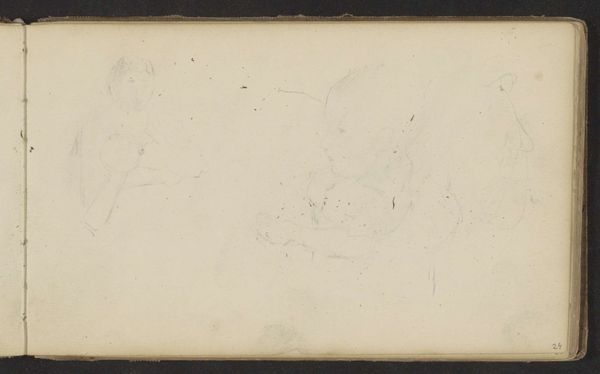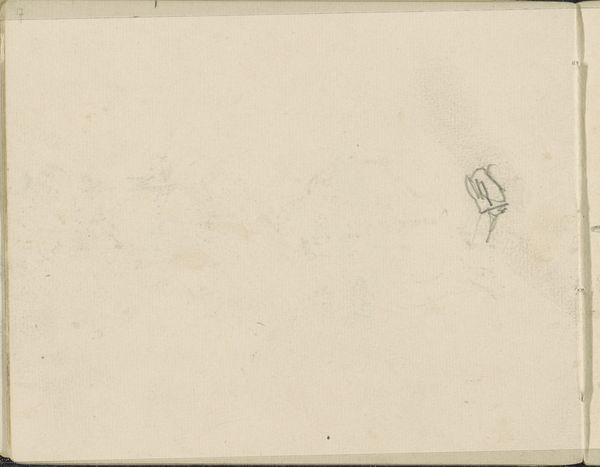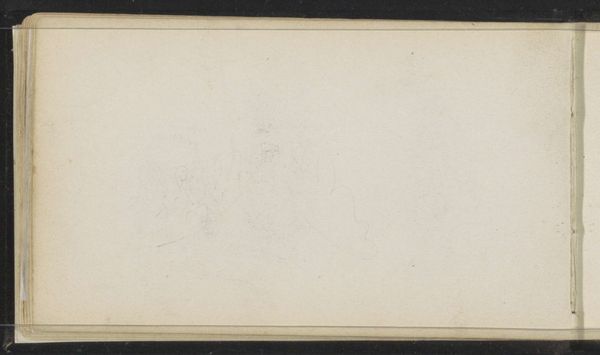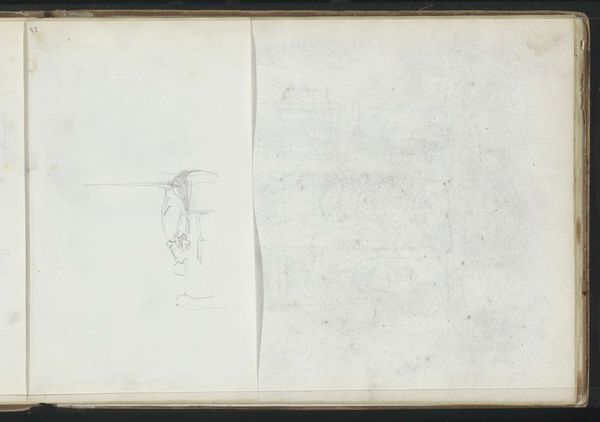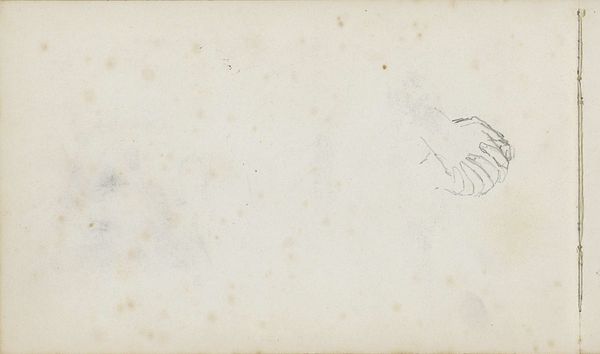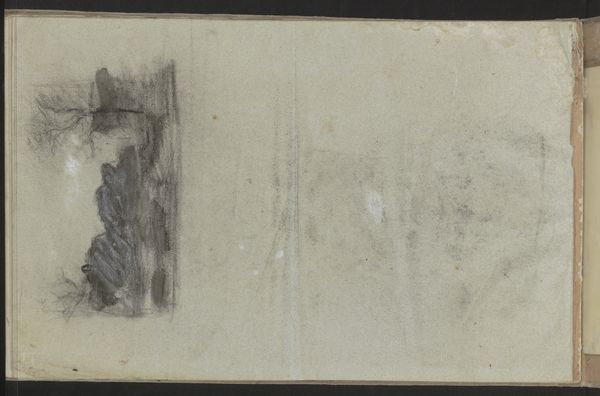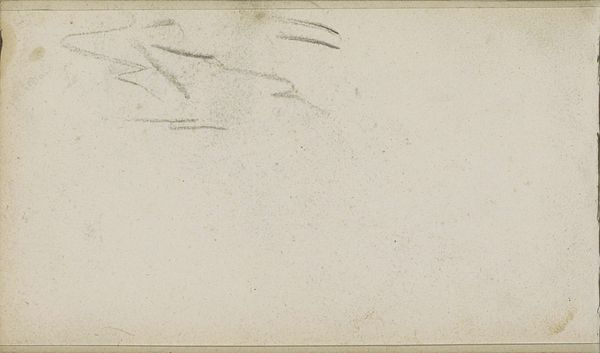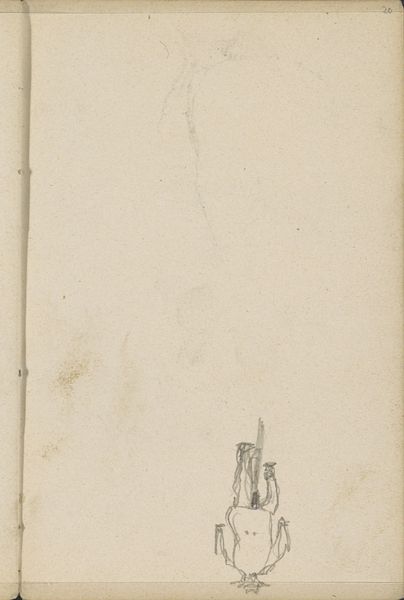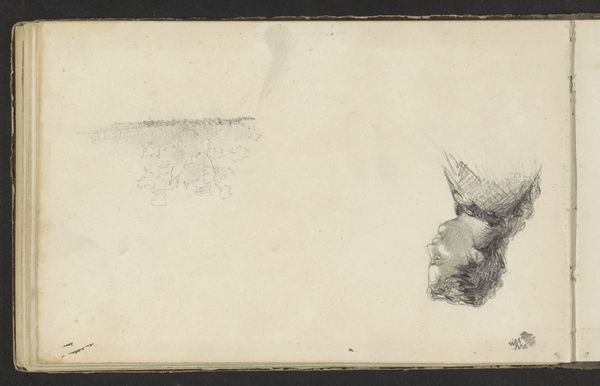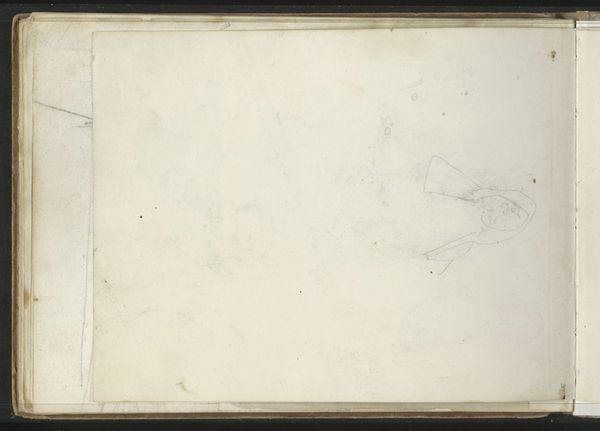
drawing, paper, pencil
#
drawing
#
landscape
#
paper
#
romanticism
#
pencil
Copyright: Rijks Museum: Open Domain
Curator: Today we're looking at “Zeilschepen,” a pencil drawing on paper created by Arnoldus Johannes Eymer sometime between 1803 and 1818. Editor: The delicacy is what strikes me first. There's such an ethereal quality to the lines; they’re almost ghostly representations of ships. Curator: I think that feeling of delicacy has a lot to do with Eymer's chosen medium. Pencil allows for these incredibly fine lines. You see the clear use of hatching, especially on the left-hand side, to denote a mass, maybe trees. Also note that the support, in this case paper, likely had a value in and of itself. Good quality paper was not a given and could be considered as part of the luxury of art production at that time. Editor: Yes, the composition guides the eye from that dense foliage towards the implied, lighter space of the sea. There's a careful balance created with simple, repeated diagonals and a suggestion of depth. One might call it proto-minimalist! Curator: Certainly. Remember though that this era sees increased maritime trade for The Netherlands, Eymer being Dutch. We cannot ignore this fact, even within a landscape; his romantic leanings bring both his natural surroundings and this human activity together. Editor: It brings forward an important element here. I can note some structural instability in the forms, giving these sailing ships and landscape elements the illusion of movement, and contributing to that emotional register so fundamental to Romanticism. It isn’t simply representational. Curator: Agreed. Considering the materiality itself and Eymer’s place within a wider economic system of the 19th century offers layers of interpretations as well. The paper, the pencils, the trading ships - these are more than mere aesthetic choices. They each have cultural relevance. Editor: That provides additional social insights. It moves our understanding away from the simple formal appreciation towards one far richer in associated implications. Curator: Exactly. Thinking about the conditions of art production expands how we can interpret Eymer's "Zeilschepen." Editor: Which means what appears to be a preliminary sketch can actually hint towards an involved set of connections between the art object and the context within which it exists.
Comments
No comments
Be the first to comment and join the conversation on the ultimate creative platform.
